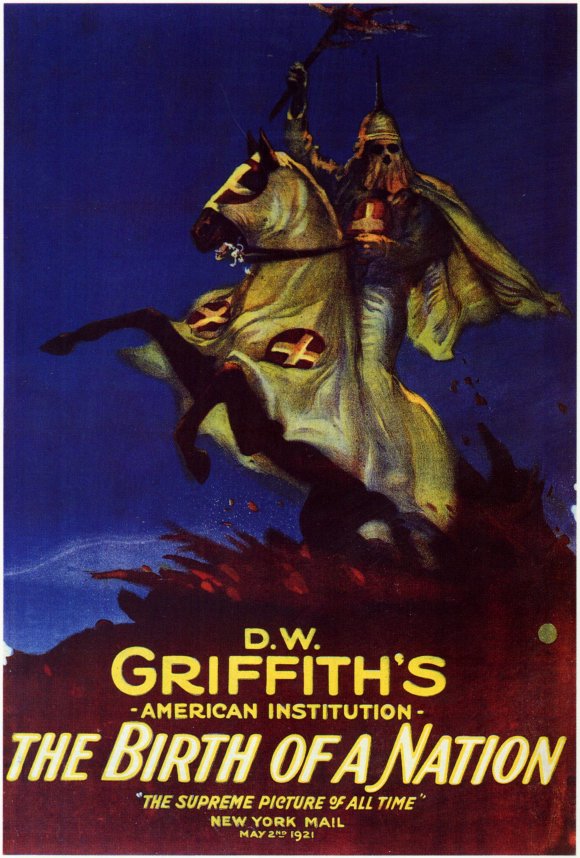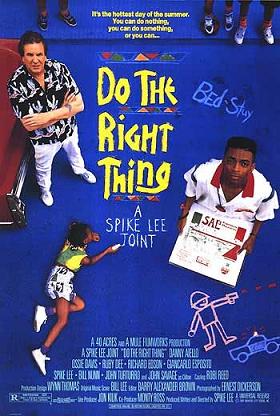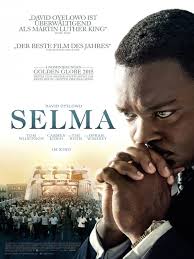In cinematic history there’s one movie that is both looked at with shame and regretful reverence. The movie’s depiction of the American dream destroyed by the abolishment of slaves is one that has sparked numerous conversations throughout the years. In this film, the black folks don’t seem to be able to adapt to their new freedom in the pristine white society of the time. Instead, they take it over with violence, unruly behavior, and worst: interracial relations. Enter the Ku Klux Klan, which is born out of one of the characters seeing little white kids trying to scare black kids with ghost costumes. At the end of the film, after all the exaggerations and scenes that seem to be lifted out of a Minstrel show instead of a movie, the KKK ride into the sunset having won the day and restoring the US to their slaving ways. This epic also transformed the filmmaking landscape, introducing many of the techniques still used today. “Birth of a Nation” debuted February 8, 1915, 100 years ago. And since then, both film and culture have changed plenty, but how much has it really changed?
The idea of the film itself was to create an alternate world where the reconstruction of this country was a disaster, and black people were shown to be unable to adapt. That the south was RIGHT!
Now, everyone knows the history of the United States. We know how it all ended. We know what happened next. But how far is society from these times? How have we grown both in movies and as a culture? Well, let’s start by saying this film was not received with open arms then, either. No, there were riots in some major cities for showing the film. The NAACP, having been just founded, protested this film as much as it could. It was banned in some parts of the country. But the majority? President Woodrow Wilson saw the film privately, and apparently approved of it, something that was later denied. It is the first film ever shown at the White House.
This D.W Griffith directed mismatch was a major box office success. It even helps kick start the KKK, which used the film as a recruitment video for decades to come. Yet, it is still revered. D.W Griffith is still considered a major force in creating the language of cinema that we use today. Problem is, what he stirred with the film itself had ramifications that have taken us years to clean up. Racism was a huge part of the early days of Hollywood. For every Hattie McDaniel, there were hundreds of black actors looking for bit jobs where they could appear on screen. Ask the one black guy in the Academy Award winning film “It Happened One Night,” who sold food outside a bus for a scene that lasted around a minute. Truth be told, for every revolutionary director that let the black folks play, there were hundreds that saw them as accessories. It wasn’t until well into the 60’s that black actors started getting some recognition with the emergence of Sidney Poitier as a major force in La La Land. Even then, it will take years before they were part of other aspects of the industry. Hell, the most they got in the 60’s and 70’s were roles in Blaxploitation movies.
Society itself was past the deep racism of the 19th century, but was not ready to let go of the white superiority in this nation. While the movie itself went too far, people decided to accept it thanks to their uneducated bigotry. The country will move slow toward tolerance, and reach it around the same time Poitier came in. But that tolerance came with limits, and while again some people were pushing up and away from these limitations, others reinforced them. This created a backslash where the only way to accept black people in entertainment was by making them be stereotypical. Making them stay together. Just like in the world outside the silver screen, when places start becoming less divided, they became more separated.
At the end of the 70’s into the 80’s came the emergence of black superstars like Richard Pryor, Eddie Murphy, and Danny Glover. Mostly paired with white actors to make them more acceptable (Gene Wilder, Judge Reinhold, Mel Gibson) in their bigger movies, they will be joined by a young black director in making that little corner they reserved for African-Americans a little bigger during this time. Spike Lee came in like a force of nature. Outspoken, highly intelligent, and extremely pissed off, Spike was not afraid to ruffle up some feathers. In the process, he created one of the most important films in African American history in “Do The Right Thing.” Blowing the doors wide open for people to see a regular day in Brooklyn, Spike kept it both realistic and cinematic. A feat that paid off as the film slowly builds tensions between the neighbors, and show us effortlessly the illness that corrode that community without any pretensions. Fun and deceptively lighthearted, Lee’s work touched upon gentrification, racism (beyond the usual black and white,) police corruption, etc.… all in one block. As relevant today as it was 26 years, a black male gets killed by the excessive force of the police in the film climax. Radio Raheem could have been named Oscar Grant, or Eric Garner, or Michael Brown. By the end, Mookie (the black main character) and Sal (the owner of the neighborhood pizzeria, Mookie’s white boss) have an argument that finally exposes the root of their racism. It’s all about the people around you, and whom you consider your tribe. Which one you are willing to protect, and which one you will not? When the credits roll, we are left with simple questions that require complex answers. Was choosing color the right choice? Was Sal more family to Mookie than his neighbors? Was Sal actually racist? Or Mookie? The movie itself asks you to think deeper, which is a direct contrast to the aggressive approach that D.W Griffith used on “Birth Of A Nation.”
Now in 2015, black entertainers are no longer accessories but Oscar winners. Spike Lee is an icon, Sidney Poitier is revere, and plenty of other figures are now on top. The generation in the 90’s helped dig themselves out of supporting roles into leading ones. Now that generation is getting older, winding down their careers, but new ones have emerged. Steve McQueen’s “12 Years a Slave” won Best Picture last year. A movie about slavery from the perspective of the opressed. The last time that happened with “The Color Purple,” the movie lost to a Meryl Streep melodrama that doesn’t qualify as one of her best movies. That’s how far we’ve come! Yet we have so much more to go. Ava DuVernay masterful work in “Selma” was ignored by the Academy, but not the film itself. The film is about one the most important moments in black history, and the figure behind it. A Martin Luther King film, directed by an African-American woman is nominated for Best Picture. Problem is that as a black female director, she has one more step to go than her contemporaries. Still, no black auteur has won a Best Director Oscar. Not even Steve McQueen last year — but he lost to a Latino director, which in itself is a step in the right direction.
And that’s how it feels 100 years later. They have moved forward. No, not them, we have. We have become more accepting. No longer do we see them running congress while eating fried chicken and getting drunk like “Birth of A Nation” depicted them. No, nowadays we have a black President in the White House, and plenty of them on TV, too. They are doctors, lawyers, engineers, POLITICIANS that are responsible! They have options beyond thug or milkman. And that has let other races move up, too. The influences of African American innovators are felt through all ethnic communities. “Birth of A Nation” may have tried to unite this nation by destroying its free ideals, but what it did was expose a wider audience to the horrors of racism. It may have taken years, but it woke those entertainers to work harder. To show the world they were not savages. The message of the film itself was that black people could never be an integral part of this country. Well, good thing we kept the techniques of the film and evolved them, because 100 years later we can see the message could have not been more wrong.
Twisted Talk: Have you seen these movies? What were your thoughts on them? What did you think of the “Selma” snub? Discuss below!











Pingback: Black Is Beautiful in NYC: Spotlight